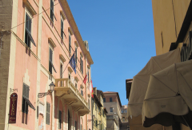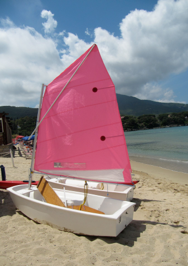Isola D’Elba
Tyrrhenian Sea
tuscany, italy
europe
May 29 - june 4, 2010


Isola D’Elba
Tyrrhenian Sea
tuscany, italy
europe
May 29 - june 4, 2010




The island of Elba is only 20 kilometers/12 miles from the coast of Tuscany, accessible by ferry from the town of Piombino. Henry and I arrived on Elba at Porto Azzuro and left 6 days later from Portoferraio with Tim, Shelly and Harry, who traveled from Austin, Texas and Rome to meet us there. The island is the third largest in Italy, after Sicily and Sardinia and is part of the National Park of the Tuscan Archipelago. Three bodies of water separate Elba from the mainland: the north coast of the island faces the Sea of Linguria; the east coast faces the Piombino Channel, and the western tip of the island is divided from the French island of Corsica by only 50 kilometers/30 miles across the Tyrrhenian Sea. With a population of approximately 30,000 residents, the numbers swell to around one million during the months of July and August, a reason, we were told by the natives, to avoid traveling there in “high season”. Henry and I found the weather to have been delightful in early June, and the crowds non-existent. There was plenty of beach for everyone, and wonderful walks to take along the shore. The island is a popular vacation destination, particularly for Italians, who often spend part of every summer here. Historically, the island holds interest as well. Originally inhabited by the Ligurian tribe of Ilvates, the island was named Ilva, and was referred to by the Greeks as Aethalia, meaning “fume” because of the iron ore smelting in the furnaces operating here. Invaders included the Etruscans, then the Romans in 480 BC, and later the Saracens. In the 11th century, it became the possession of the Republic of Pisa, then was sold to the Visconti of Milan in 1398. The Appiani, or Lords of Piombino held it for two centuries, then the island was handed over to Cosimo de Medici I in 1546, who fortified Portoferraio, renaming the port and village “Cosmopoli”. In 1577, the rest of the island was turned over to the Appiani. In 1596, Phillip of Spain captured Porto Azzuro, building two fortresses there. In 1802, the island became a French possession, during which time it prospered. The island is most famous for its connections to Napoleon. He was exiled to Elba following the Treaty of Fontainebleau and his forced abdication in 1814. He arrived on the island on May 3, 1814 with a personal guard of 600 men, nominally the sovereign of Elba, though the island was patrolled by the British. Because of Napoleon’s genuine concern for the well-being of the populace of the island, and as something to do to pass the time there, he carried out in a series of economic and social reforms to improve the quality of life there. He stayed on Elba for 300 days, returning to France on February 26, 1815. After his defeat at Waterloo, he was exiled to the isolated and barren South Atlantic island of Saint Helena, where he died in 1821. Elba was given to the Grand Duchy of Tuscany by the Congress of Vienna in 1815, then it became part of the new unified Kingdom of Italy in 1860. The English language palindrome that Henry quoted to amuse his grandson, Harry, was: “Able was I ere I saw Elba”, words that reads the same both forward and backwards.
PHOTOS: Left Column: 1. View of Napoleon’s Palazzini del Mulini 2. Geraniums at Cap St. Andrea. 3. View of a street in Portoferraio. 4. One of the last of the flowers, succulents that bloom prolifically on the island during April and May. Center, Top: Harbor view off the west coast of the island. Center, Bottom: The white sand beaches of Marina di Campo. Right Column: 1. Clock in Portoferraio. 2. Sailing dingy belonging to the sailing school on the beach of Portoferraio. 3. A crowd on the beach in Cap St. Andrea.


Island in the Sun





